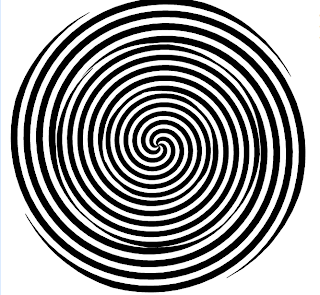Optical Illusion
Optical illusions also know as visual illusions are tricks of how your brain preseves information transmitted from your eyes for example creating multiple sets of visual information that other wise put together would not make logical sense.
There are three main forms of optical illusions,
The First is literal illusions that make images from object that would not normally create these images.
The Second Physiological ones that play on the extent of information taken in by the eyes and brain
this can be created by different things such as light,motion or color.
The Third is Cognitive Illusions more widely know as "mind games" playing on sub-conscious
information concluded by small amounts information for example the motion of few circles
back and forth into one postilion if done correctly could look like a figure walking because we would relate the shape and motion to the that of human motion even though the image is just a handful of circles moving back and forth into one position.
This is a literal illusion as in a actual version of this the three circles spin in different directions and at different speeds creating false movements like the circles inside expanding were as there actually just spinning
This is an example of a "Mind game" similar to the example in the description of
physiological illusions, it simulates human movement
information concluded by small amounts information for example the motion of few circles
back and forth into one postilion if done correctly could look like a figure walking because we would relate the shape and motion to the that of human motion even though the image is just a handful of circles moving back and forth into one position.
This is a literal illusion as in a actual version of this the three circles spin in different directions and at different speeds creating false movements like the circles inside expanding were as there actually just spinning
This is an example of a "Mind game" similar to the example in the description of
physiological illusions, it simulates human movement
because our brain recognizes the shape and musle movment of a human however the illusion is merely created by a few well caculated circles moving in a repeated pattern.
This is an example of psychological illusion when animated the two colored pass threw the vertical black lines creating the illusion that one Square is slower than the other however a short interval takes away the black lines to reveal that both squares are traveling in synchronization, the illusion comes from the fact that your brain is trying to proses the information consequently one of the squares appears to be slower or faster than the other.







